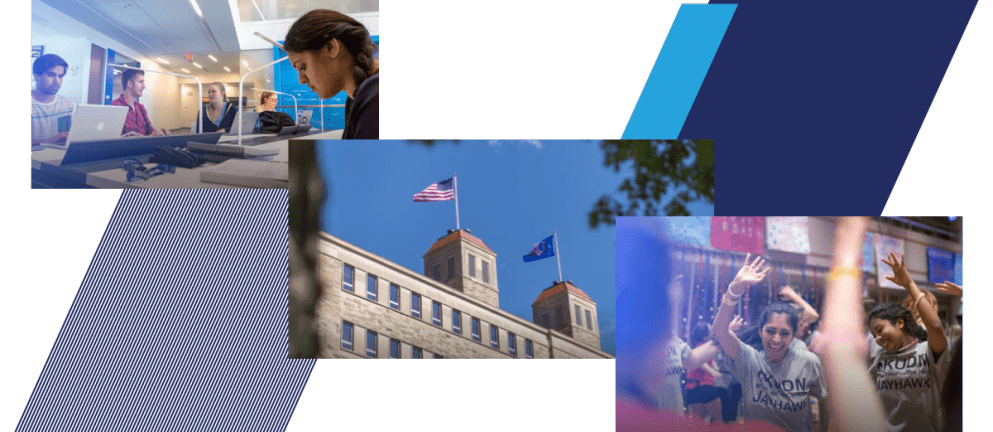
University of Kansas
Acquia DAM (Widen), including the Assets and Insights applications.

downloads in the last 12 months
uploads in the last 12 months
searches in the last 12 months
The Client
The University of Kansas (KU) is a public research university with its main campus in Lawrence, Kansas, and several satellite campuses across the state.

The Situation
The KU marketing team shares creative assets with a wide range of individuals — both on and off campus.
The Challenge
KU’s first image management system was built in-house in the late 90s and was replaced by a more sophisticated open source solution about a decade later. Tim Seley, KU’s Associate Director of Digital Media, shared that both of these platforms were initially supported by their IT department. “As priorities changed, IT just didn’t have the time or the resources to keep supporting an open source- solution or a self-built solution,” he said.
The existing platform had grown so unusable that simply locating the right image was difficult. “Frankly, what happened is we just stopped doing some of the things that we wanted to do,” Tim said. “When our system quit working, we just said ‘sorry, we can’t do x-y-z anymore.’”
The Solution
Tim’s team began exploring possible digital asset management (DAM) solutions, and implemented Acquia DAM in 2018. “I think it’s pretty clear that a DAM makes perfect sense in a university setting because you have such a large community of people that want access to images,” Tim said.
User-friendly system
“Design matters to us,” Tim said, “and a system that looks really good, is very responsive, and does what you expect it to do — it’s important.” Acquia DAM’s ease of use empowers teams across campus and beyond to access content on their own. In addition, it minimizes the time required to get new users up and running. “You can train anybody on [Acquia DAM] in an hour or less,” he said.
Reduce login barriers
KU implemented single sign-on (SSO) functionality to further enhance ease of access to content in Acquia DAM. “Single sign-on has been great because setup was a breeze, and now any user that’s part of the KU infrastructure can easily access the system,” Tim said.
Robust roles and permissions
KU uses roles and permissions to control how different user groups interact with content in the DAM system. This helps ensure that only approved assets can be viewed and shared by certain users. “One of the things that drew us to [Acquia DAM] was how flexible it was in terms of asset roles and security,” Tim said. And as their distribution needs grow, Tim hopes to explore Portals as an option for sharing curated groups of assets to specific user groups.
The Results
Effective content distribution
Acquia DAM provides all users with a single location for creative content. “Having one central place where we can send them or they can browse on their own without the help of a photographer has been super, super helpful,” Tim said. And tools like share links have further streamlined content distribution. “If we photograph a concert, or a classroom, or whatever the thing may be, it’s really easy to quickly and effectively distribute those images across campus, regardless of where they’re coming from,” Tim said.
Better quality of work
Easy access to creative content has allowed teams across campus to spend less time searching for assets, and more time on other work. “For us, it’s definitely been a tool that we can use to increase efficiency. And then that in turn also helps the final product, so the work we do is improved as a result,” Tim said.
A partnership
After years of limited availability from their IT department, KU was excited about all of the guidance that Acquia provides before, during, and after implementation. “Having a staff that supports you means you don’t have to worry about losing your images, losing your library, or something going down at a critical time.” With help just a phone call, chat, or email away, Tim knows that Acquia is a partner in achieving their current and future DAM goals.